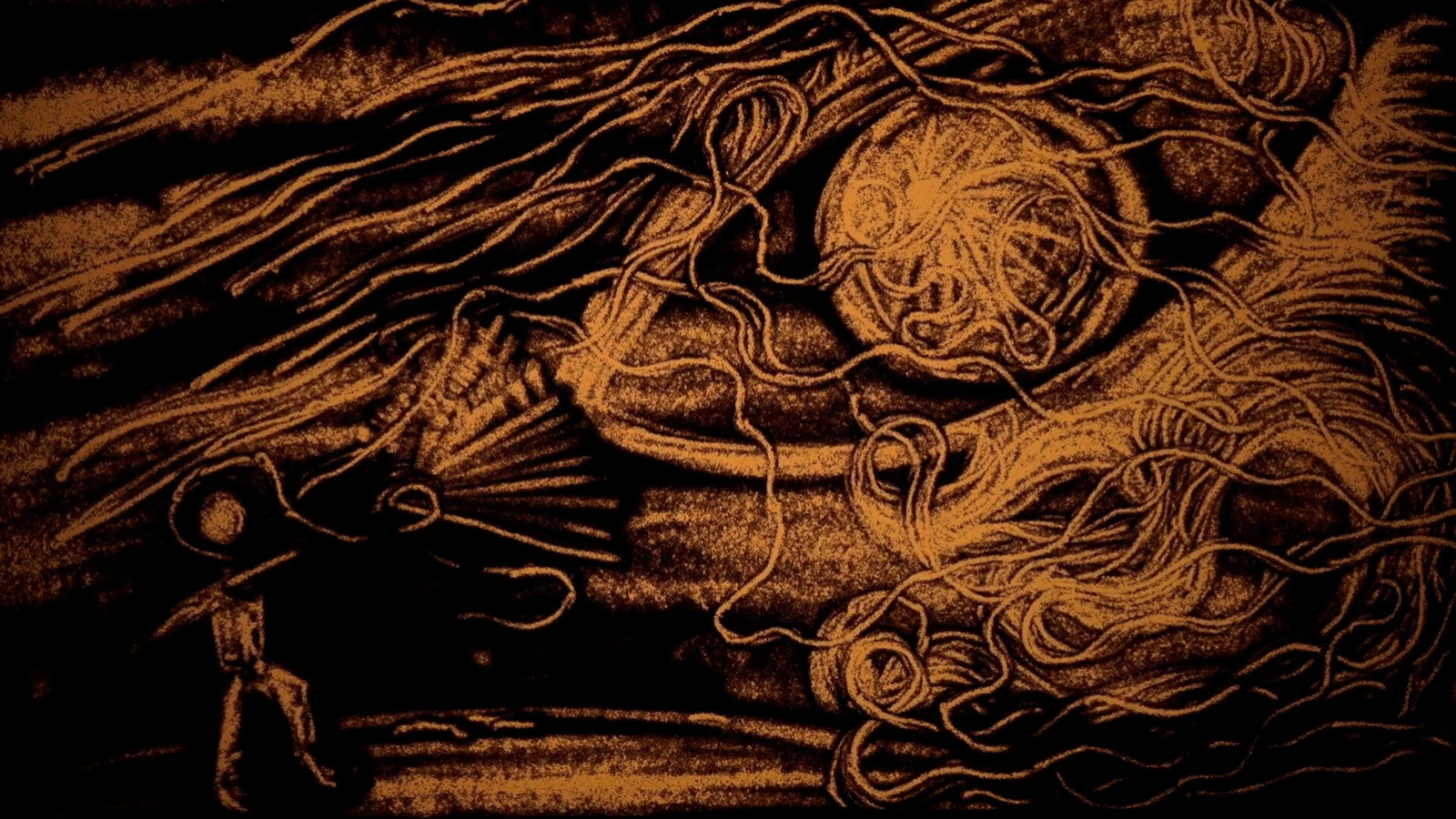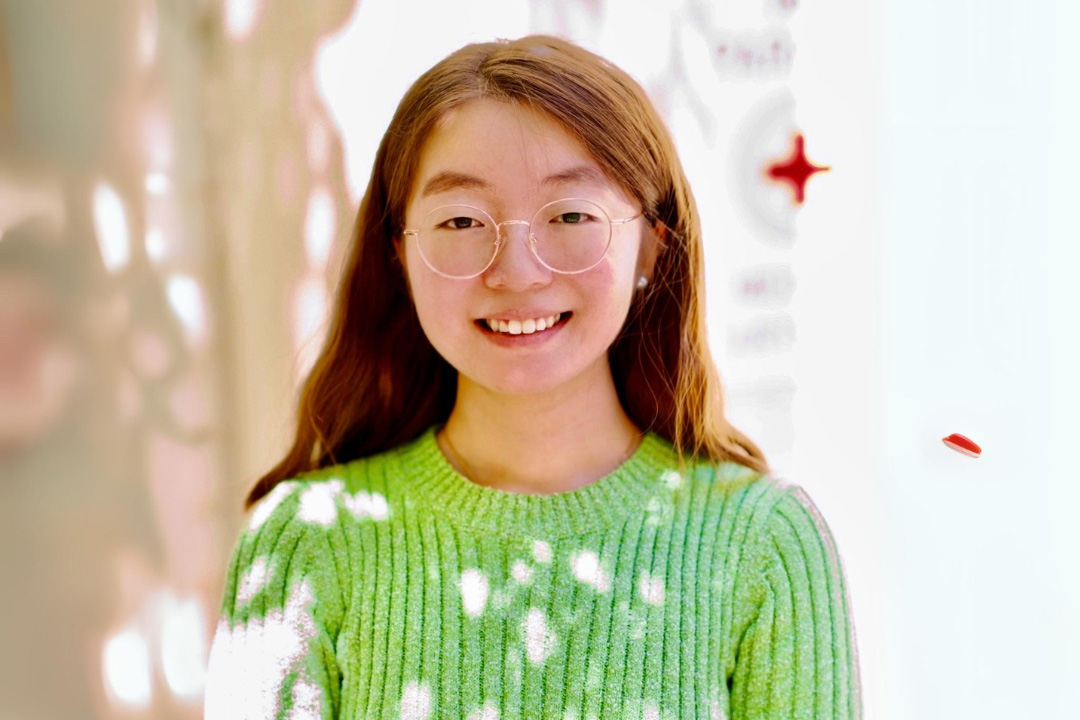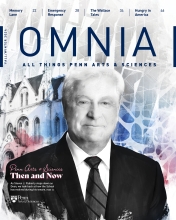Using Animation to Spread Strength and Hope
Ejun Hong, C’25, has been making animated films since high school. The prizewinning Echoing, It Doesn’t Stop is her fourth, inspired by Russia’s war on Ukraine.

A roughly molded animated figure slowly straightens up and lifts its arms. Above it, an eye appears. A voice, speaking in Ukrainian, says, “So I’ll talk about it, about the green eye of a demon in the colorful sky.”
Ejun Hong, C’25, has been making animated films since high school. Echoing, It Doesn’t Stop is her fourth, inspired by Russia’s war on Ukraine. In the film, a woman reads a Ukrainian poem on the soundtrack while a mix of media reflects the words—sometimes literally, with a demon’s eye blinking above a sleeping figure, sometimes more abstractly, with rippling mounds that could be earth or struggling humans, and fuzz gathering into something like a flower.
At Penn, Hong is double-majoring in fine arts and cinema and media studies and minoring in design—“all the art Penn offers” for undergraduates, she says, including every animation class she can find. Her films have received 10 awards and 37 official selections to film festivals, including three that qualify films for the Academy Awards or British Academy Film and Television Arts (BAFTA) Awards.
Echoing, It Doesn’t Stop won Best International Short at the Cindependent International Film Festival and was a semi-finalist at Flickers’ Rhode Island International Film Festival, an Academy Award– and BAFTA-qualifying festival.

Ejun Hong, C’25, who is double-majoring in fine arts and cinema and media studies and minoring in design, has been making animated films since high school. (Image: Joe Hall)
Here are four things to know about Hong and her newest film:
1. Her dream is to inspire with her animation.
When Hong was 10, she developed a serious eye disorder. “It was a pretty tough time in my childhood,” she says. Her family watched a lot of animated movies. “The films really helped teach me what life is, and also what values I should hold. They gave me happiness and hope that I could use to overcome my difficulties,” she says. “I realized how powerful animation could be. My dream is to use animation or other art media to help those in need and inspire people.”
2. A response to a war, her new film is a change in direction.
Hong describes her previous films as “mostly very bright, very vivid in terms of the imageries, but also in terms of the messages,” which were quite personal. Echoing, It Doesn’t Stop is different.
Her father is a professor of Ukrainian studies in Seoul, South Korea, and Hong herself has been interested in the area since she was young. For her final project in a multimedia animation course taught by Joshua Mosley, a professor of fine arts at the Weitzman School of Design and affiliated faculty in Penn Arts & Sciences’ Department of Cinema & Media Studies, Hong decided to focus on the war and the experience of Ukrainians. “It was hard to attempt to portray the reality, but also, at the same time, deliver hope,” she says.
3. Abstractness of a poem inspired the film’s unique look.
Hong started her process by selecting the poem “So, I’ll Talk About It” by Serhiy Zhadan, a Ukrainian poet and novelist, as the focus for her movie. In the film, Yaryna Uhera, C’26, reads the poem, while the English text, translated by John Hennessy and Ostap Kin, appears at the bottom of the screen. Hong’s goal was to use the poem “to deliver a portrayal of survival, sacrifice, and the enduring echoes of hope of Ukrainian people.”
The abstract nature of the poem—half metaphorical, half literal—meant Hong had to visualize how to effectively tell the story she wanted to tell. “That is the first time I learned that the medium and material itself could also convey its own unique message,” she says. She decided different media should represent the poem’s different parts.
“I used sand animation to portray the literal lines because sand is a material that could be easily flown away. It could be destroyed easily, and the lives of Ukrainians and everything that they built, everything that is real to us, was getting destroyed so easily,” Hong explains. “The metaphorical lines are talking about demons, something mystical and not real to our society. But those kinds of things were becoming a reality to Ukrainian people. So, for that I use puppet animation, something tangible that we can really touch, something that’s realistic.”
The experience had an unexpected consequence for Hong. “This animation really changed my perspective,” she says. “It made me realize how passionate I am in terms of using tangible material.”
4. She wants to continue to speak through art and help others to do so.
This summer, Hong is a design intern at Sony Pictures Entertainment, creating work for Wheel of Fortune, Jeopardy!, and its Game Show Network. “It’s really fun,” she says.
When she gets back to Penn in the fall, she’ll continue to help lead the Participatory Action Art Mentorship (PAAM), an after-school program she started at William Sayre High School in West Philadelphia in which Penn students teach animation, architecture, and design to students. The idea, Hong says, is to help the high schoolers “express their stories, their voices, through the media of animation, architecture, or design.”
Hong also is planning two animated films for her senior thesis, one focusing on lymphoma patients in Korea, the other showing how animation and art helped Hong overcome her fear before her eye surgery when she was young. “My core goal hasn’t changed, but how I use mediums has,” she says. “I would like to keep creating animations and other films that help people in need tackle societal issues while exploring different media and different materials.”
Main image: A sand animation still shot from Hong’s film Echoing, It Doesn’t Stop.



